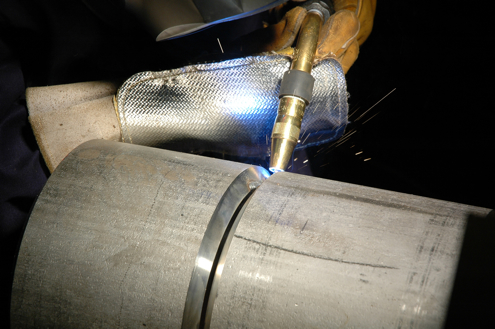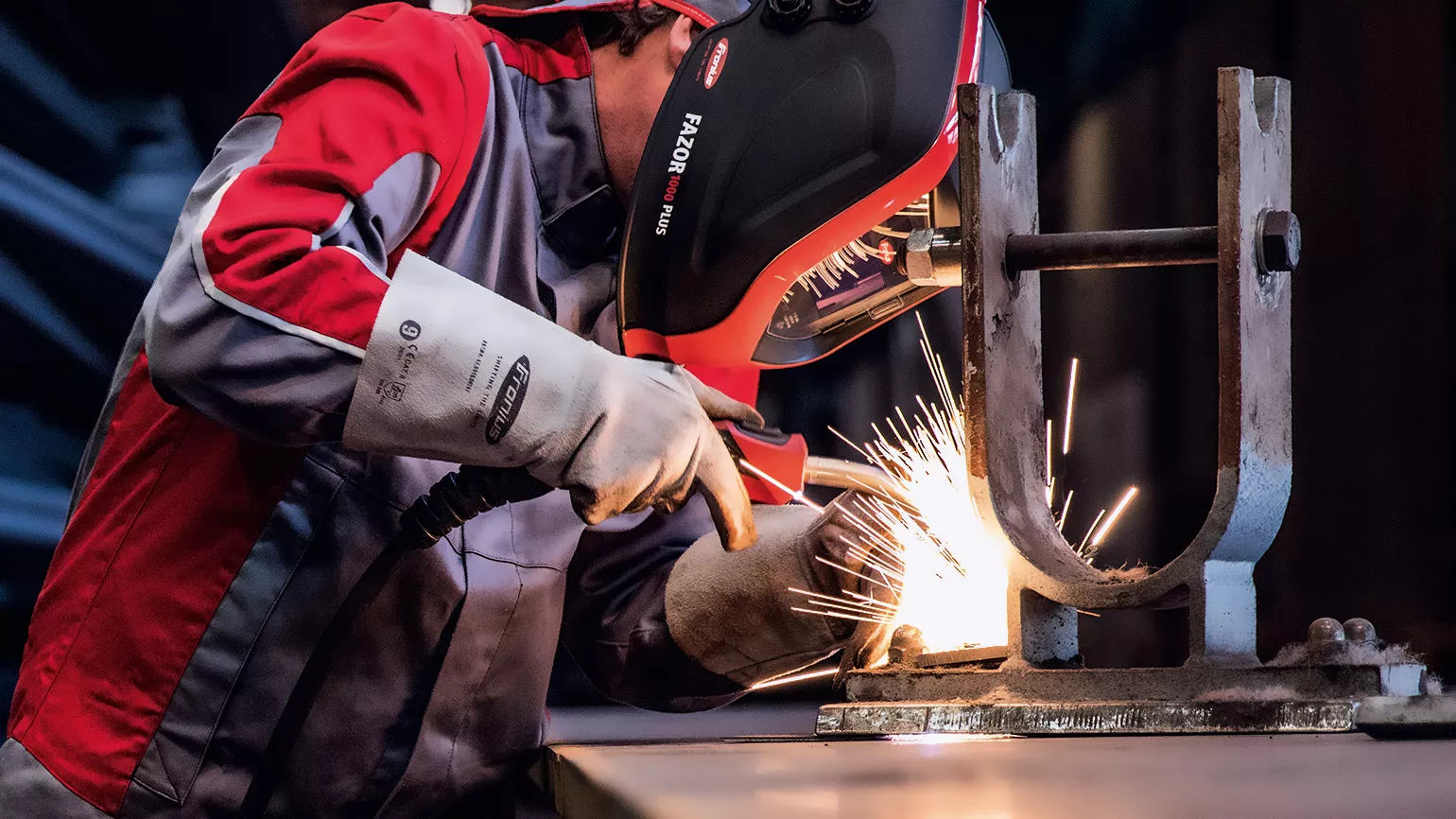Why welds crack and how Montana Mobile Welding and Repair prevents them
Wiki Article
Everything about Welding: Secret Insights Into Techniques and Finest Practices for Success
Welding encompasses a range of methods, each fit for particular materials and applications. Understanding these approaches, such as GMAW, SMAW, and TIG, is important for accomplishing excellent outcomes. In addition, the appropriate devices and safety techniques can not be ignored. As prep work and troubleshooting play important functions in the welding procedure, mastering these aspects can considerably boost the quality of the last product. What are the vital elements that guarantee a successful weld?Comprehending Various Welding Techniques
Welding methods encompass a range of approaches, each suited to certain applications and products. Among the most usual methods are Gas Steel Arc Welding (GMAW), Secured Steel Arc Welding (SMAW), and Tungsten Inert Gas Welding (TIG) GMAW, likewise referred to as MIG welding, is prominent for its rate and versatility, making it ideal for thin products. SMAW, or stick welding, is favored for its simplicity and performance in outside atmospheres, especially with thicker steels. TIG welding supplies accuracy and control, making it suitable for complex work and non-ferrous steels (Montana Mobile Welding and Repair Belgrade Welding). Each technique has its one-of-a-kind advantages and considerations, allowing welders to choose the very best technique based on the job's needs, product type, and wanted results. Comprehending these methods is essential for effective weldingCrucial Welding Devices and Devices
While numerous welding methods need particular skills, the appropriate devices and devices are similarly crucial for accomplishing quality results. Necessary welding devices consists of welding makers, which differ depending on the technique-- such as MIG, TIG, or stick welding. Safety equipment, consisting of handwear covers, aprons, and safety helmets, guarantees security and convenience throughout the process. Furthermore, clamps and components assist safeguard products in place, ensuring precision in welds. Consumables like welding poles, cable, and securing gas are additionally essential parts that affect the quality of the weld. Tools such as grinders and cutters promote surface area preparation and post-weld finishing, contributing to a specialist outcome. Buying high-quality tools eventually enhances the effectiveness and performance of welding projects.Safety Practices in Welding
Correct safety practices are important in the welding market to shield employees from potential threats. Welders must use ideal personal protective tools (PPE), including safety helmets with proper shading, gloves, and flame-resistant apparel. Adequate ventilation is crucial to lower exposure to hazardous fumes and gases created during the welding process. In addition, workers must be learnt the correct handling of welding equipment to avoid accidents. Fire safety procedures, such as maintaining flammable materials away from the welding location and having fire extinguishers conveniently offered, are necessary. Routine assessments of equipment and offices can assist determine prospective dangers prior to they lead to accidents. By adhering to these safety and security practices, welders can create a much safer working atmosphere and minimize threats related to their trade.Readying Products for Welding
Preparing products for welding is an important action that significantly influences the top quality and stability of the end product (Montana Mobile Welding and Repair Fabrication). Proper prep work involves cleaning the surfaces to remove impurities such as oil, rust, and dirt, which can endanger the weld. Methods such as grinding, sanding, or making use of solvents are frequently used to accomplish a clean surface area. In addition, making certain that the products fit together well is essential; voids can cause weak welds. It's likewise important to think about the alignment and positioning of the elements, as this will certainly influence the convenience of welding and the last outcome. Picking the ideal filler material and ensuring compatibility with the base metals is important for attaining solid, resilient welds.Tips for Getting High-Quality Welds
Achieving premium welds calls for attention to detail and adherence to best practices throughout the welding process. Correct joint prep work is important, guaranteeing surface areas are clean and totally free from contaminants. Choosing the ideal filler product and welding method based on the base metals is important for perfect bonding. Maintaining constant travel rate and angle while welding can promote and avoid issues uniformity. Furthermore, managing warm input is essential; too much warm can lead to warping and damaged joints. Routinely inspecting the welds throughout the procedure permits immediate modifications if required. Lastly, using proper post-weld therapies, such as cleaning and tension alleviation, can boost the longevity and honesty of the weld, eventually ensuring an effective result.Troubleshooting Common Welding Issues
Welding usually provides difficulties that can affect the top quality and integrity of the last product. Usual problems such as porosity, irregular weld grains, and overheating can develop, each needing specific troubleshooting strategies. Comprehending these troubles is crucial for welders to improve their abilities and achieve excellent outcomes.Porosity Troubles Explained
Although porosity can typically be overlooked, it remains a crucial problem in welding that can endanger the integrity of a finished item. Porosity refers to the presence of tiny gas pockets within the weld grain, which can lead and compromise the joint to early failing. This trouble typically emerges from impurities, dampness, or inappropriate shielding gas protection during the welding process. To mitigate porosity, welders ought to validate that the base materials are clean and completely dry, utilize ideal shielding gases, and keep consistent welding specifications. Frequently inspecting the devices and setting can additionally aid determine potential concerns prior to they show up in the weld. Addressing porosity properly is vital for achieving strong, durable welds that fulfill quality standards.
Inconsistent Weld Beads
Inconsistent weld grains can considerably impact the quality and stamina of a completed product. Various factors add to this issue, including improper travel rate, wrong amperage setups, and irregular electrode angles. When the welder relocates as well rapidly, a bead may appear slim and do not have infiltration, while moving also gradually can trigger excessive accumulation. Additionally, utilizing the incorrect amperage can cause either damaging or extreme spatter, both of which compromise weld stability. The welder's method, such as inconsistent torch activity, can also result in uneven grain look. To mitigate these issues, welders should concentrate on maintaining constant, regulated motions and ensuring appropriate devices settings to achieve uniformity in their welds. Uniformity is key to attaining trusted and solid welds.Overheating and Bending Issues
Extreme heat throughout the welding process can lead to substantial getting too hot and contorting issues, influencing the architectural honesty of the workpiece. These problems usually show up as distortion, which can compromise positioning and fit-up, making additional assembly testing. Aspects contributing to overheating include the selection of welding specifications, such as voltage and take a trip speed, as well as the type of material being bonded. To reduce these issues, welders need to preserve constant travel speed and suitable heat input while keeping an eye on the work surface temperature level. Furthermore, preheating or post-weld heat therapy can aid alleviate stresses triggered by fast air conditioning - Belgrade Welding. Routine examination and adherence to ideal techniques are vital in stopping getting too hot and making certain the long life and dependability of bonded frameworksRegularly Asked Inquiries
What Are the Career Opportunities in the Welding Sector?
The welding market uses diverse profession possibilities, consisting of settings as welders, engineers, teachers, and assessors. Specialists can function in production, building, aerospace, and automotive sectors, gaining from solid need and competitive wages in numerous duties.Just How Can I Enhance My Welding Speed Without Giving Up High Quality?
To enhance welding speed without sacrificing top quality, one need to exercise efficient strategies, keep tools, maximize setups, and boost hand-eye coordination. Normal training and looking for responses can additionally substantially add to attaining much faster, top quality welds.What Accreditations Are Available for Welders?
Countless qualifications exist for welders, including those from the American Welding Society (AWS), the National Center for Construction Education and Study (NCCER), and various industry-specific companies. These credentials improve employability and demonstrate skill proficiency.Exactly How Does Welding Affect the Residences of Metals?
Welding influences the properties of steels by changing their microstructure, which can cause modifications in solidity, toughness, and ductility. Heat input and air conditioning rates throughout the procedure significantly influence these product qualities.Can I Bonded Dissimilar Metals Together?

Report this wiki page